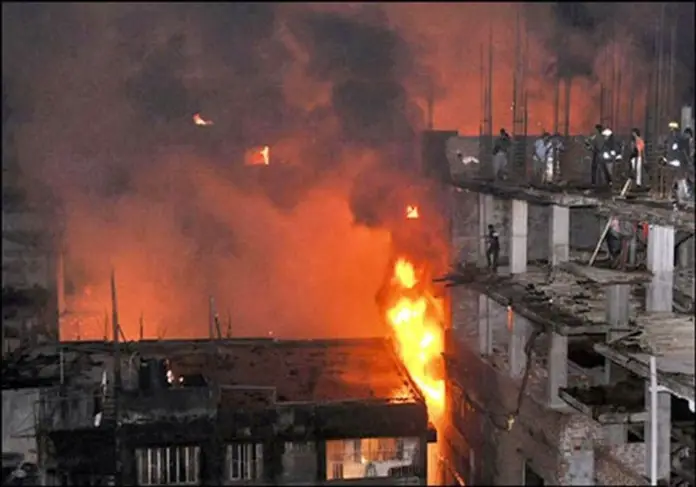Fires, snatching, accidents, shootings and blasts have become a frequent occurrence in Karachi – a metropolitan city that has people from across Pakistan residing in it. The frequency of these incidents has desensitized the residents so much that they no longer see the burning problem in the metropolis. It is the regularity of fire incidents.
Karachi witnessed more than 2,300 fire incidents in 2021 alone. That is roughly around 190 incidents per month and six per day. As Karachiites go on living their lives amid the chaos of rising inflation and lack of civic amenities, the city burns every day. But the flames are lost in the hustle and bustle of Karachi that even the authorities concerned have not paid heed to them. What else can explain the state’s apathy towards Karachi’s fire issue?
It was nearly nine years ago when the Baldia fire tragedy caused an alarm over the lack of fire stations and equipment, as well as lack of workers’ safety in a city that boasts of its industrial output. More than 260 workers were burnt alive on that unfortunate September night. The cause was poor maintenance of electric wiring that resulted in a full-blown inferno. The Sindh government and relevant authorities were quick to pledge to fix the issue and increase fire stations in the city.
But nine years later today, there are only 22 fire stations for a city of around 15 million people. Out of these, only two are fully functional. It is pertinent to note that international standards demand for one fire station per 100,000 people, which means the metropolis should at least have around 145 of them. But clearly that’s asking for too much as lives of citizens, especially factory workers are at risk.
According to official data, the most dangerous fire incident of 2021 occurred in Mehran Town, Korangi Industrial Area on August 27. A total of 16 people lost their lives – all of them workers at a travel-bag making factory. Media reports stated that not only was the unit located at a congested area, the building had only one passage for exit and entry – a blatant violation of labour rights. In its report, the ILO states that “one of the key areas of decent work deficit in Pakistan is poor occupational safety and health (OSH) at the workplace in both formal and informal sectors”. Clearly, neither the employers nor the provincial government care about this pressing issue. It is after all business as usual in most factories across the metropolis despite the prevalence of such hazardous conditions.
Add to this the fact that fire fighters in the city lack training. Internationally, only fit and trained professionals are allowed to enter the profession but not in Karachi. It is an open secret that those who are unable to find jobs anywhere else, end up joining the fire department. How then can one expect them to save lives is anybody’s guess. And if that wasn’t enough, add the acute water shortage in Karachi to the mix, and you have an already bad situation made worse.
And that’s not all. The mysterious shanty fires?
In November, at least a hundred shanties were gutted by fire near Nagan Chowrangi and then in December, the fire engulfed 45 of them in an empty plot near Bab-e-Rehmat Masjid in Shaman Town. The cause of the fire in both the incidents remains unknown till date with some reports suggesting that the former was caused by a resident to receive aid.
There are a lot of questions surrounding Karachi’s fire issue: Why haven’t efforts been made to reduce these incidents, make workers’ safety a priority, develop the firefighting sector, and most importantly, find solutions? The city is in a dire need of an overhaul of the existing system, starting with a master plan. Surviving on mere luck should not be the only option available to its citizens.







